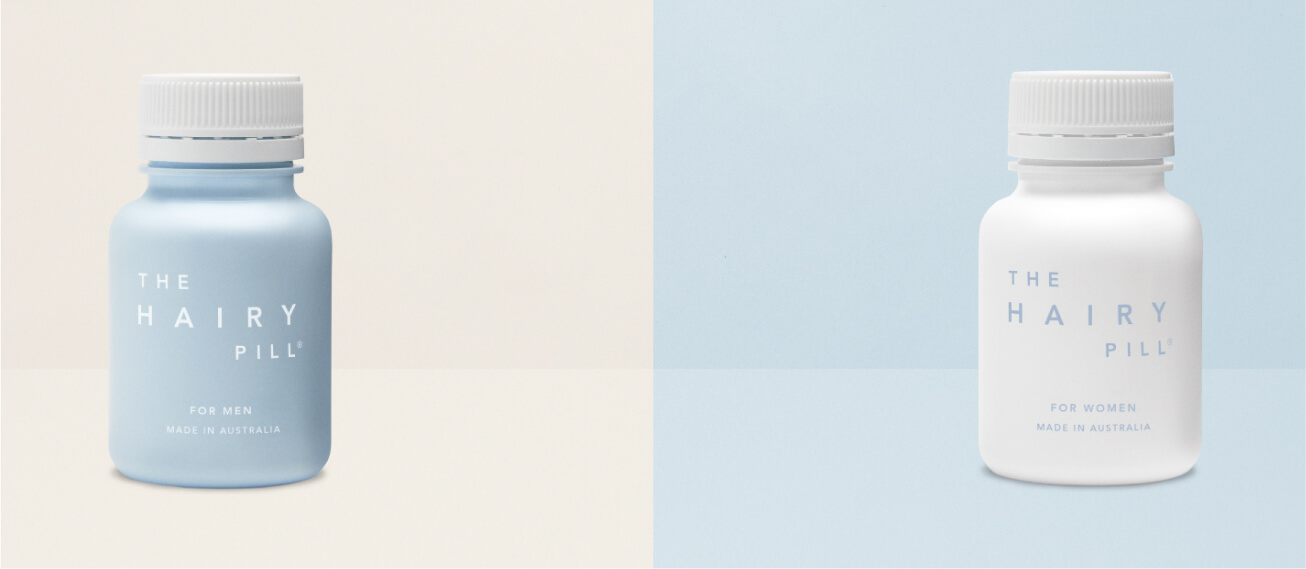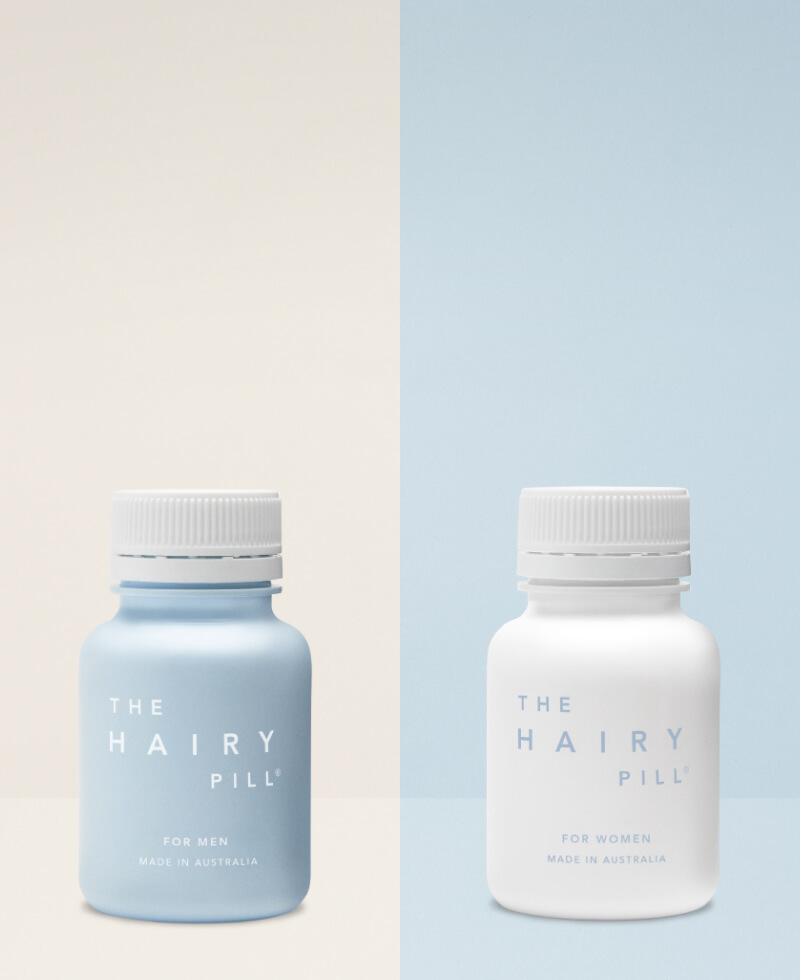Everybody loses hair. Yep, even George Clooney and Jennifer Aniston. Hair shedding is so routine that we all lose about 50-200 strands of hair a day.
So are hair shedding and hair loss the same thing? Not at all.
One is a natural part of the hair growth cycle. It’s something that needs to happen if we want thick and healthy hair.
The other — hair loss — is when we start shedding hair at a rate we’re not used to. It’s when there’s more hair on the brush and in the shower drain and less on our head than we’re used to seeing.
So what is hair shedding about? Why do we naturally shed hair? And what does it mean when we shed more hair than usual?
We’ll answer all these questions below. We’ll also look into hair growth treatments because hair shedding can be stopped.
What Is Hair Shedding?
You comb your hands through your hair and come away with a few strands. That, in a nutshell, is hair shedding.
It’s not the same as male pattern baldness or female pattern hair loss. It’s disconcerting, sure. But it’s actually a natural part of the hair growth cycle.
On average, we shed between 50 and 200 strands of hair daily. Anything more than that may be a sign of something more serious.
It can help to understand why your hair sheds in the first place and what might trigger more shedding than usual — for that, we need to know a little more about the natural hair shedding cycle.
Discover if The Hairy Pill® is right for you.
Take our short hair health quiz and we will work out if The Hairy Pill® can help you and your hair.
Take the quizThe Natural Hair Shedding Cycle
Hair grows from hair follicles in your scalp in an endless cycle of growing, resting, shedding, and new growth.
It’s not synced up. Each follicle on your head is at a different stage in the cycle. If that weren’t the case, you’d lose all your hair at once, then regrow it all.
Instead, you hardly notice the hair growth cycle at all. The only sign of it is when you shed a few dozen strands each day.
Hair Growth Phase
The first stage of the cycle is the growth phase or the anagen phase. Hair in this stage is longer and fully pigmented.
At any given time, about 80% to 90% of the hairs on your head are in the growth phase, which lasts 2-7 years.
A range of factors can affect how long your anagen phase lasts. As you age, the anagen phase naturally shortens. Other influences on this phase include stress, poor nutrition, and hormonal changes.
Transition Phase
After the growth phase, the hair transitions into the catagen phase, when the hair detaches from its blood supply and stops growing. The hair follicle begins to shrink.
Between just 1% and 3% of the hair on your head is in the catagen phase at the same time (and is called club hair). The phase lasts just 2-3 weeks.
Resting Phase
Next up, your club hair takes a break. It clings to your scalp but new hair growing beneath it will eventually push it out.
The resting phase — called the telogen phase — lasts about 3 months.
About 5-10% of your hair follicles are in the telogen phase (or the shedding phase that follows) at any given time.
Hair Shedding Phase
The final phase is a death knell for your club hair — something that happens to every hair on your head at some point.
During this shedding phase, called the exogen phase, new hair pushes against the club hair, forcing it to detach from the scalp and fall out.
By now, your hair follicle has come full circle, returning to the anagen phase to grow the new hair.
So hair shedding is a completely natural part of the hair growth process and there’s nothing to worry about if you’re pulling a few strands out each day.
Noticing more strands than usual clogging the drain or on the hairbrush?
Excessive hair shedding might be a sign that something has disrupted the hair cycle and pushed more follicles into the resting and shedding phase than usual. Let’s look at what those disruptors might be.
What Causes Hair Shedding?
There are many reasons why your hair might be shedding more than usual, from temporary lifestyle changes to chronic medical conditions — or just the natural aging process.
We’ve listed some of the main causes of hair shedding below.
Alopecia Areata
Alopecia areata is an autoimmune condition that can cause either balding patches or diffuse hair loss. It may result in complete baldness.
Other medical conditions
A whole range of medical conditions can cause more hair shedding than usual. Some medical triggers may include:
- Surgery
- Iron deficiency
- Acute fever
- Thyroid disease
- Severe infection
- Kidney or liver disease
- Autoimmune diseases
- Chronic infections
Many diseases are caused by stress. Others trigger stress. Either way, stress is often the underlying cause of sudden hair shedding.
Stress
When you’re stressed, your body produces more androgen (the male hormone), which in turn can often lead to hair loss.
A sudden, traumatising stress can also trigger telogen effluvium, a type of hair loss that causes your body to temporarily halt hair growth. Usually, the hair shedding becomes apparent about 3 months after the stressful event.
Certain medications
Several medications have excessive hair shedding as a potential side effect. Some of the most common medications with hair loss side effects include:
- Retinoids
- Beta blockers
- Anticoagulants
- Immunisations
- Carbamazepine
- Propylthiouracil
Overstyling
We all love a stylish hairdo but those snatch ponytails and Bob Marley dreadlocks could be hurting your hair follicles — as can heat styling and chemical treatments like hair dyes or bleaching, all of which can make your hair brittle.
Traction alopecia is a type of hair loss caused by repetitive pulling and stress on your hair, usually caused by tight hairstyles like braids, cornrows, or dreadlocks.
Age
As you get older, both men and women may start to notice more hair shedding. This may be a result of genetics, with hair becoming finer and more prone to shedding with age.
Or it could be a result of hormonal changes in the body — for example, when women are going through menopause.
Hormonal Changes
Hormonal changes are a natural part of our bodily processes. But it’s possible to have too much of a good thing.
A hormonal imbalance with an excess of the male hormone androgen could shorten the hair growth cycle, contributing to hair shedding.
Women are more likely than men to experience hair shedding because of a hormonal change. Some hormonal events that may contribute to hair shedding include:
- A recent pregnancy (or miscarriage)
- Heavy periods
- Starting or stopping hormonal birth control
- Menopause
- Polycystic ovarian syndrome (PCOS)
Rapid Weight Loss
It’s common to experience a bit of excess hair shedding some 6-12 weeks after you’ve experienced rapid weight loss. Sudden weight loss can produce nutritional deficiencies, which often reveal themselves first in our hair.
Ready to start your hair growth journey?
- Free express shipping
- Unlimited doctor consultations
- Simple once a day treatment
How to Stop Hair Shedding?
The best way to stop hair shedding is to take a holistic approach with a combination of good sleep, good food, better hair care, and when necessary; hair growth medication.
Have a Balanced Diet
A nutritional diet can provide your body with all the vitamins and minerals it needs to grow healthy hair. To boost the hair growth stage, aim for a balanced diet with plenty of fruits and vegetables, healthy fats, and protein like legumes, fish or lean meat.
Get Sufficient Sleep
Sleep is essential to a healthy immune system — and anything that’s good for your immunity is good for your hair. Allow your body and mind the rest it needs to recuperate and regenerate with 7-8 hours of sleep per night.
Hair Treatment Pills
Hair growth pills are designed to address the roots of hair loss, stopping hair shedding in its tracks and promoting hair regrowth.
Take The Hairy Pill®. It contains underlying technology that was invented, clinically tested, and patented by world-renowned Dermatologist Professor Rodney Sinclair.
And it’s been clinically proven to work, with just one pill, taken daily.
The Hairy Pill® makes your hair loss treatment easy by bringing our partner doctors and personalised hair loss treatments to you (albeit, one by phone and the other via delivery to your door).
Avoid Tight Hairstyles
Time to let your hair down — literally! Give your follicles a little relief by changing up your hairdo and replacing the tight ponytail with loose braids. Or try going au naturel.
Practise Good Hair Care (and Scalp Care)
All those hair treatments you’ve been putting on your scalp? Give them a rest and your scalp a break.
Avoid heating tools, hair dye, bleaching, and other hair care practices that are giving your hair a little less care than you thought. Styling creams and serums? They too can add unnecessary weight and stress to your tresses.
Be sure to keep your scalp healthy by washing your hair and scalp regularly.
Say No to Hair Shedding Today
Hairbrush or shower drain looking the kind of hairy you want to see on your head?
If you’ve noticed that your hair is thinning on top, it’s not too late to reverse the symptoms and stimulate new hair growth.
Get your hands on The Hairy Pill® to start seeing results.
Get started on your new hair growth treatment in just 5 minutes today.













